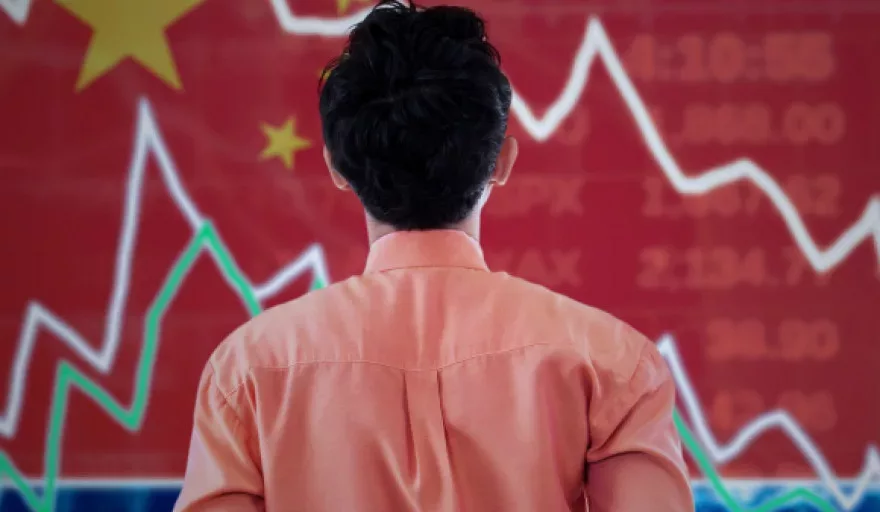In spite of reports that China’s economy is now registering its slowest pace of growth in 25 years after decades of expansion, investors may be fooled into thinking that China is struggling to hold its own in the global political arena. However, the world often loses sight of the sheer scale and power of the country’s economy, and the importance of economic cooperation with the “locomotive of world economic development”. “No matter what rate the country grows at in 2016, its share of the global economy, and many specific sectors, will be larger than ever,” Gordon Orr, McKinsey & Company aptly noted in a commentary at the start of this year.
The inexplicably-linked global slump in commodity prices and currency devaluation are causes for concern among investors, with China confidence still recovering from rock-bottom. On the flipside, the country has been quick to identify the changes needed to grow to prominence once more; guiding its economy away from the old growth model – which had a largely one-dimensional reliance and dependence on cheap exports – toward a future powered by Chinese consumers and a stronger services sector.
Experts have long been asking the question: Can China truly recover? There is no doubt the country has a tough road ahead to shift away from its mainstay of exports and focus on its own personal economic development through multiple subeconomies. Supporting this, the Government’s 13th Five-Year Plan (FYP), combined with the State Council’s ‘Made in China 2025’ (MiC2025) initiative, promises to give rise to a new China, with the power to attract and retain international community trust through economic reform and new opportunities.
CHINA’S NEW NORMAL
Migrating away from an investment-led exporter to a consumer-led economy, China faces a major structural realignment that will take place between now and 2020. According to PwC analysis of the 13th FYP, China will need to double its 2010 GDP and per capital income of both urban and rural residents by 2020; an enormous task given the current economic uncertainties. Some of the Plan’s significant aims include:
- Raise the efficiency of investment and companies and further open up its economy
- Promote advanced manufacturing and agricultural modernisation
- Become an innovation-driven nation
- Continue raising the service sector’s contribution to GDP
- Further increase consumption’s contribution to economic growth
- Narrow the income gap, eliminate poverty and improve people’s livelihoods through expanded public services on employment, education, culture, social security and healthcare
- Vigorously promote environmental protection and low carbon growth
Essentially, the 13th FYP strives to achieve a more balanced, inclusive and sustainable development by coordinating a range of economic indicators and better allocation of resources. To achieve this goal, President Xi Jinping reiterated that China would need to maintain its current medium-high economic growth, with an average GDP growth rate of 6.5 percent until 2020; hopefully guiding the economy into its “new normal” and avoiding the “middle income trap”. Since his election in 2012, Xi has emphasised his desire to carve a path towards “the great rejuvenation of the Chinese nation”, promising economic and legal restructuring along the way; something that is reaffirmed in the 13th FYP. Although none of these goals are new for China, this is the first time all the ideas have been included together in one document.
REALISING THE CHINESE DREAM
A key part of bolstering its position as one of the world’s largest economies will come from educating the western audience on its ambitious economic revival. APCO Worldwide summarised in a recent report that the country needs to rebuild the trust of international investors to “realise the Chinese dream aimed at vaulting the country to the centre stage of international affairs and back to its rightful place in the global order”.
“Today’s China is a different place for multinational companies. The contradictions for outsiders are perplexing, but for Xi they make perfect sense. They are critical to realising the Chinese dream and ensuring that the Communist Party of China is around to take credit for delivering it,” APCO reported in March this year.
Based on the fact that the 12th Five-Year Plan concluded with all major targets met, the 13th Five-Year Plan is set to make comprehensive reform arrangements in fields including finance, justice and opening up, and to establish binding targets for improving public services and protecting the environment.
Having these binding targets will thus drive the Chinese Government to meet its promises and better perform its duty to realise social fairness.
According to Ding Yuanzhu, a policy consultant at the Chinese Academy of Governance, the next five years will be characterised by innovation, coordination, care for the environment, opening to the world, and the sharing economy, with medium-high growth and industrial upgrading the two major goals.
In the shorter-term, it is expected that the loss of confidence between the US and Chinese relations will have a positive impact on the country’s relationship with developing countries, with the China-Africa cooperation in particular expected to reach a higher level via further mutually-beneficial relationships.
Clearly, cutting the red tape and instigating bold, market-oriented reforms in sectors dominated by state-owned enterprises is likely to create a more favourable business environment for both domestic and foreign firms.
Over the long-term, pursuing common, international development will result in China becoming more economically integrated with the outside world; placing particular emphasis on the One Belt, One Road Initiative, free trade zones, and the internationalisation of its currency, the yuan.
NATIONAL REVIVAL
By focusing on financial reforms aimed at moving more of the economy toward a market-based allocation of capital, China hopes to improve investor confidence on its long path to a sustainable future.
Going forward though, the question is: are the 13th FYP goals all achievable by 2020 with enough strength to counter the slowing economic growth currently felt within the global economy? Only time will tell. Needless to say, achieving the GDP target will remain the core objective of fiscal and monetary policies, which will lower interest rates and put further pressure on the exchange rate versus the dollar.
According to James Laurenceson, Deputy Director of the Australia-China Relations Institute at the University of Technology Sydney, China has contributed around 40 percent of global income growth over the past five years.
“The IMF forecasts that China’s economy will be 44 percent bigger in 2020 than now. This means that China will remain the leading source of global growth in the coming five years,” he commented in March.
If this is to become a reality, then the goals outlined in the 13th Five-Year Plan become a far more realistic truth that will serve as a small stepping stone on the way to achieving “national revival” by 2049.




































